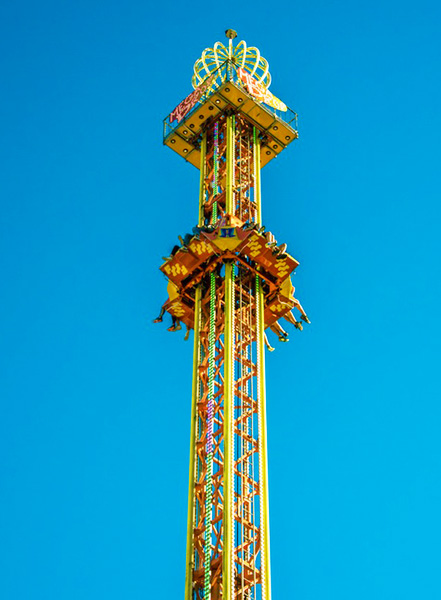Purchasing a major amusement ride is an investment that demands more than just enthusiasm—it requires precise logistical planning. When it comes to vertical thrill rides like drop towers, swing tower rides, or paratrooper rides, not paying attention to space limitations can result in costly mistakes. This article explores the spatial and site-specific considerations that must be evaluated before selecting a ride, ensuring that it fits seamlessly within your park layout and operational infrastructure.
Assessing Site Dimensions Before Purchasing a Ride
Why Measurements Matter More Than You Think
Tower rides (аттракцион башня свободного падения) demand vertical and horizontal clearance. Many buyers mistakenly assume that if there’s open land, the ride will fit—but real-world implementation involves much more. The actual footprint, including safety clearance zones, queue lines, operator cabins, and exit pathways, can take up far more space than anticipated.
Even seemingly compact rides like a paratrooper ride, with its umbrella-like spinning structure, need ample rotation space to ensure rider safety and smooth operation. Failing to account for these needs may lead to ride limitations, increased liability risks, or the need for costly renovations.
Site Evaluation Checklist for New Installations
- What is the available area for the ride, including safety buffer zones?
- Are there height restrictions due to zoning laws, buildings, or tree canopies?
- Is the terrain flat and stable enough to support heavy structures and foundations?
- Can emergency evacuation paths be integrated into the design?
Having an on-site inspection by an engineer or manufacturer’s rep can prevent misjudgments. This step is especially critical for vertical rides like a swing tower ride (аттракцион седьмое небо), which may exceed 30 meters in height and need deep foundations to remain secure under strong wind conditions.
The Importance of Ride Scale and Passenger Throughput
Balancing Ride Size with Guest Flow
Larger rides don’t always mean better ROI. While a massive tower attraction may draw initial attention, if it only accommodates a few riders per cycle, it can lead to long wait times and customer dissatisfaction. Conversely, a paratrooper ride (аттракцион орбита), with its rotating swing seats and moderate footprint, may offer higher throughput while still thrilling guests.
Understanding your average visitor volume during peak and off-peak times will help you choose the ride that fits both your physical space and operational capacity.
Modular Options for Tight Locations
Some manufacturers offer modular tower rides or collapsible models that can be disassembled for transportation or space optimization. If you’re running a mobile carnival or operating on leased land with uncertain renewals, this kind of flexibility is invaluable. These compact designs can also be fitted into narrow urban locations or rooftop amusement setups, providing versatility without sacrificing excitement.
Electrical Infrastructure and Mechanical Support Requirements
Power Supply and Compatibility
Drop tower and swing tower rides often come with significant power demands. It’s vital to ensure that your facility’s electrical system can handle the voltage, current, and frequency requirements of the ride. A swing tower ride, for example, usually requires 3-phase electricity and backup generator capacity in case of outages.
Additionally, you must factor in accessibility for regular maintenance. If your site’s layout makes it difficult to service motors, check sensors, or replace parts, long-term operating costs can skyrocket. This is particularly true for complex rides like a paratrooper ride, which includes spinning arms, lighting systems, and pneumatically powered restraint mechanisms.
Water Drainage and Ground Stability
Tower rides also require excellent drainage systems beneath and around the foundation to prevent erosion and structural instability. Soil testing may be necessary to verify the ground can hold the ride’s full operational weight, including passengers.
Compliance With Local Laws and Spatial Codes
Adhering to Urban and Amusement Regulations
Different regions have specific codes that govern the height, noise levels, and lighting of amusement rides (детские аттракционы). For example, urban theme parks may face strict height restrictions that make tall swing tower rides unfeasible. Others may have community safety regulations requiring extra noise barriers or lighting constraints.
Be sure to work closely with local inspectors and zoning boards during the planning process. Submitting CAD layouts, 3D models, or wind load calculations ahead of time can streamline approvals and reduce costly delays.
Final Considerations: Smart Planning Pays Off
Before you invest in a major attraction like a drop tower, swing tower ride, or paratrooper ride, take the time to plan your spatial logistics down to the last meter. Measure carefully, confirm electrical and mechanical compatibility, and ensure that the ride supports your venue’s scale, infrastructure, and visitor flow.
In the world of amusement park attractions, space isn’t just about physical dimensions—it’s about functionality, efficiency, and sustainability. Make those square meters count.

